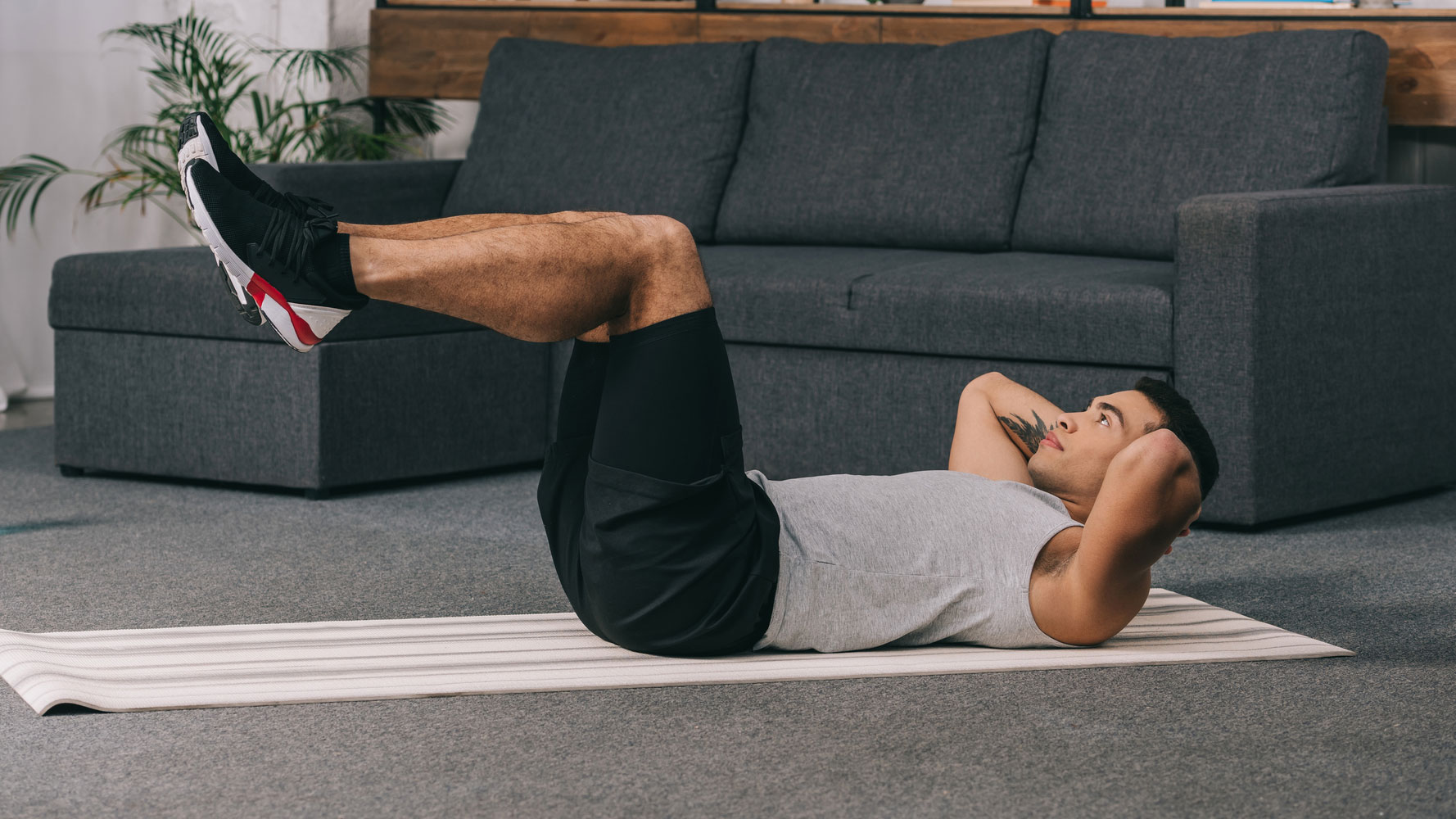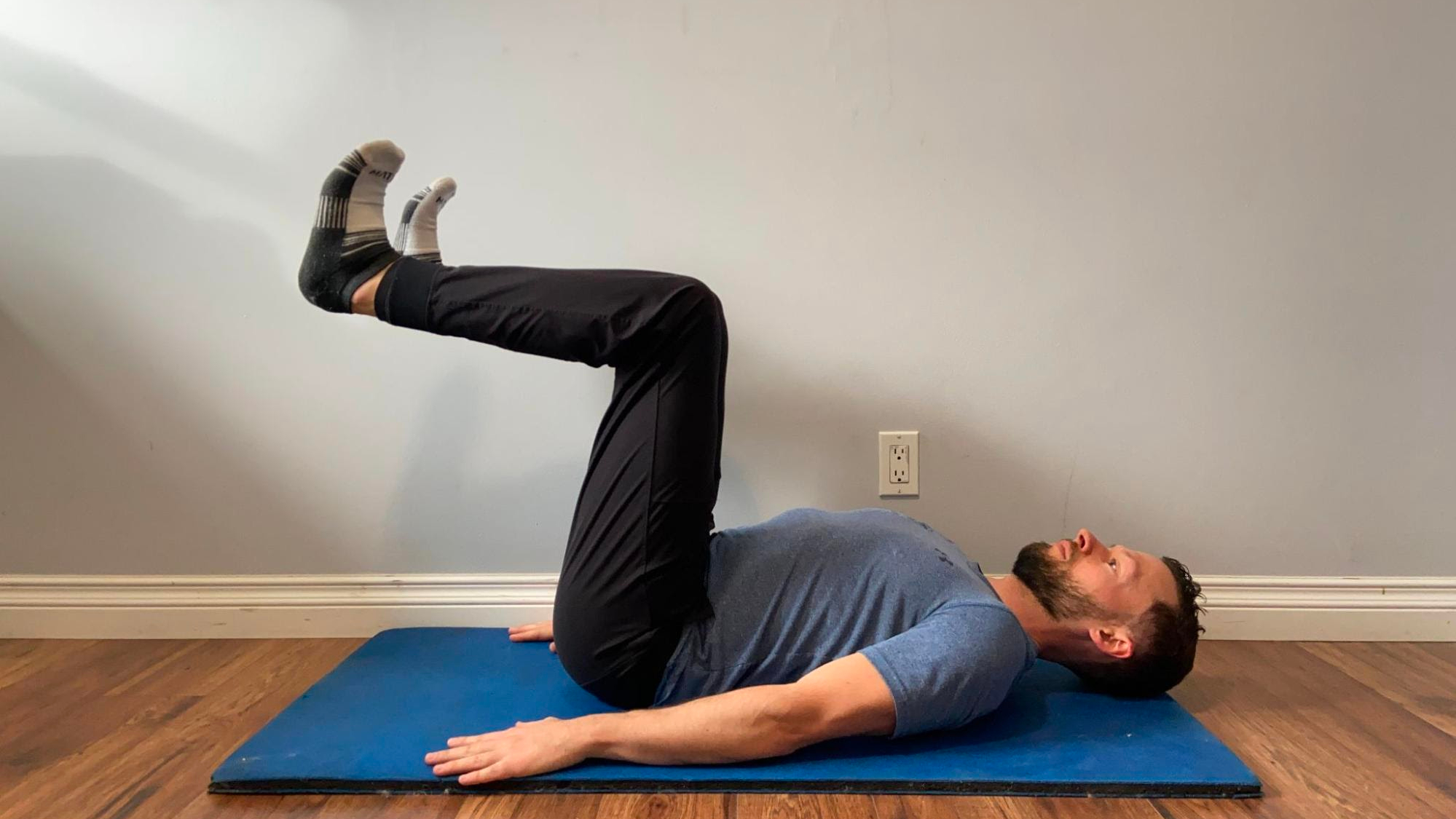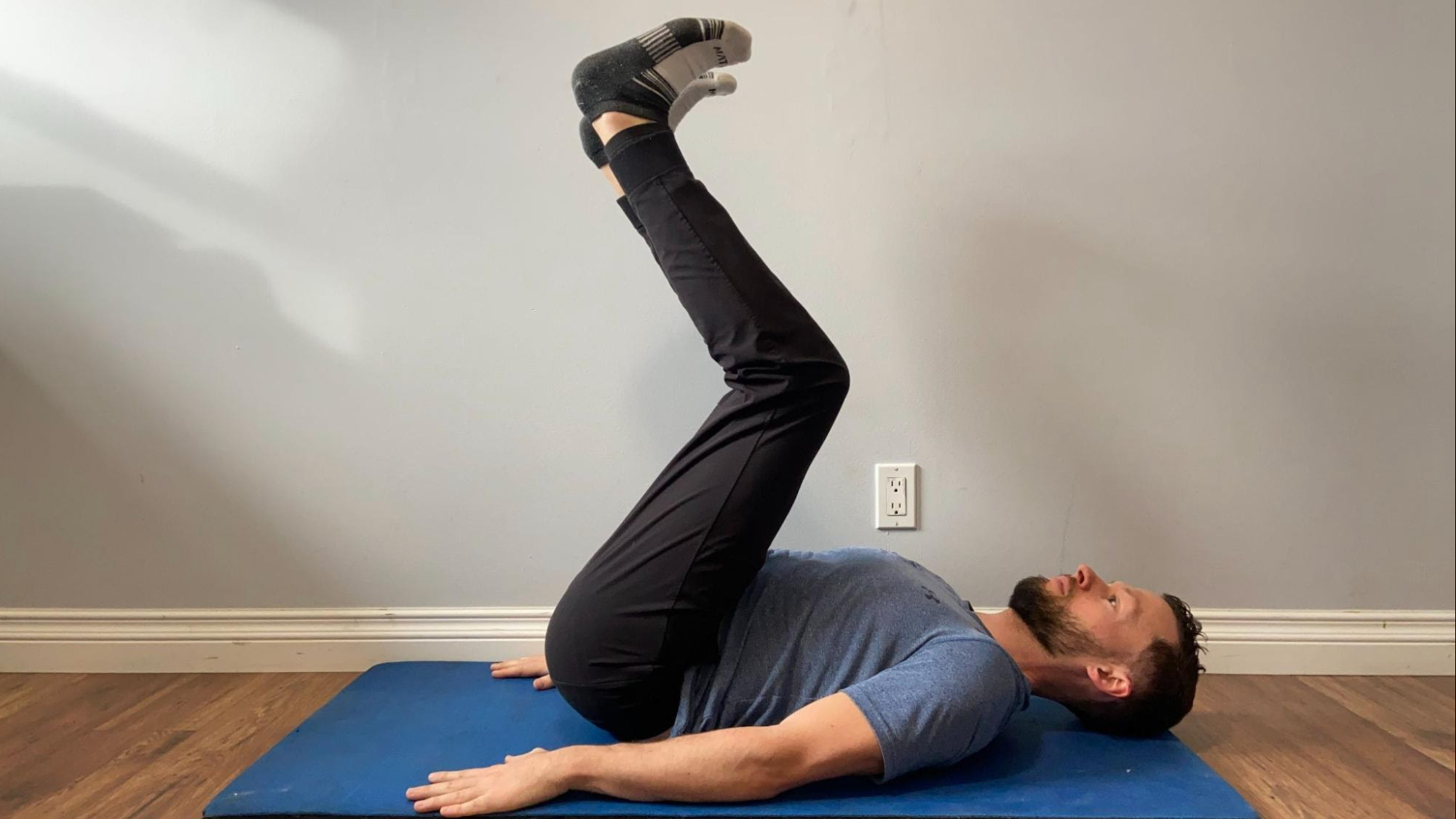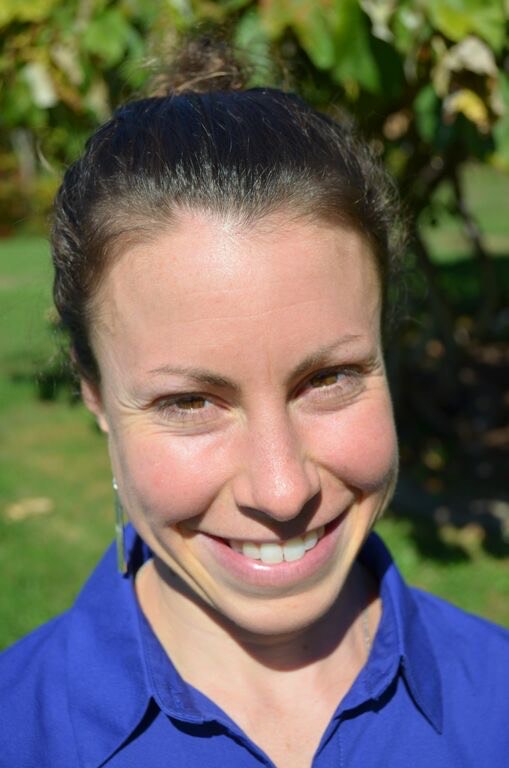Learn how to do a reverse crunch to build a stronger core
We asked a personal trainer how to do a reverse crunch and why you should add it to your ab workouts


You may have heard that it's important to strengthen your abs, but most workout programs suggest doing many bodyweight crunches to build muscle around your midsection.
Crunches are some of the best abs workouts but can quickly become repetitive and boring. Plus, you can target other parts of your core muscle and abs by learning how to do a reverse crunch.
To help guide you through the technique, we spoke to NSCA-certified Strength and Conditioning specialist Michael Hamlin, who explained how to do a reverse crunch and why you should add this crunch variation to your training.

Mike Hamlin is a National Strength and Conditioning Association (NSCA)-Certified Strength and Conditioning Coach and has been a personal trainer since 2008. He is the founder of Everflex Fitness and holds a Bachelor's degree in Kinesiology.
How to do a reverse crunch

Hamlin says there are several benefits of reverse crunches. "Reverse crunches are a great exercise to work your lower abs and can be done at home with minimal equipment (just an exercise mat)," he notes.
"If you want a set of solid abs, this exercise is a great starting point for beginners." Ready to give it a try? Hamlin walked us through the steps for how to perform reverse crunches properly.
- Lie on your back on an exercise mat or a comfortable surface with extended legs.
- Place your hands on the floor next to your body with your palms facing down. This will help you stabilize your body.
- Lift your legs off the ground, keeping your knees bent at roughly a 90-degree angle. Your thighs should be perpendicular to the ground, and your shins parallel to the floor.
- Pause at the top of the movement and squeeze your abs, drawing your belly button inward towards your spine. Make sure that your back stays flat against your exercise mat.
- Lower your feet back down to the starting position, but do not let your feet touch the floor.
- That's one repetition. Repeat up to 10 times before taking a break.
What's the difference between a crunch and a reverse crunch?
The main difference between a crunch and a reverse crunch is the direction of movement. "In a regular crunch, you lift your head and shoulders off the ground, whereas in a reverse crunch, you lift your feet and hips off the ground," contrasts Hamlin.
"Additionally, reverse crunches place more emphasis on the lower abs and hip flexors, whereas with regular crunches, people will feel their upper abdominals more, [though] both regular and reverse crunches target the rectus abdominis."
Start your week with achievable workout ideas, health tips and wellbeing advice in your inbox.
How to do reverse crunch kick-ups

You can learn how to do a reverse crunch with kick-ups to make the move more challenging. According to Hamlin, "the reverse crunch kick-up is a bodyweight exercise that targets the lower abs and hip flexors, but it increases the intensity level and is a little more advanced."
- Lie on your back with your legs extended and hands placed under your buttocks.
- Lift your legs off the ground, keeping your knees bent at roughly a 90-degree angle. Your thighs should be perpendicular to the ground, and your shins parallel to the floor.
- Contract your abs and lift your hips off the ground, using your lower abs to lift your legs towards the ceiling.
- Lift your feet higher towards the ceiling to activate all parts of your abdominals and core.
- Slowly lower your legs back to the starting position with control.
- That's one repetition. Repeat up to 10 times before taking a break.
Hamelin says the crucial part of this ab exercise is using the proper tempo, pacing, and joint angles. "So many people want to rip through this as fast as they can, which is a mistake for this exercise."
"If we slow down, we have the opportunity to really get the core engaged more," explains Hamlin. "If you can do your reps in under 30 seconds, you are going way too fast. Try to set a timer and see if you can lengthen that time to a minute."
Hamlin also notes, "if you bring your feet too far overhead (think past your face at the top of the movement), there is a good chance you won't feel the exercise as much as you could."
"Gravity will start to take over to pull your legs, and you don't want any help from your friend gravity. Keep those feet high but don't let them travel past the top of your forehead at the top of the movement."
What muscles do reverse crunches work?
Although the reverse crunch is an ab exercise designed to target your abdominals and core, it's helpful to know exactly which areas it requires, as this will help improve your technique.
"The muscles that reverse crunches work are primarily the rectus abdominis, which is the long, flat muscle that runs down the front of the abdomen, as well as the hip flexors," explains Hamlin.
"These muscles play a significant role in stabilizing the pelvis, maintaining proper posture, and supporting the spine. They also help with movements such as bending forward, lifting objects, and walking."
Benefits of reverse crunches
Hamlin says that reverse crunches are a great exercise because they work your lower abs, which are often challenging to target with many other core strengthening exercises.
"By lifting your legs off the ground, you engage your lower abs and help to strengthen them," explains Hamlin. "Additionally, reverse crunches can help to improve your overall core strength and stability, which can help to prevent injury and improve your posture."
You might spot that we're using core and abs interchangeably; there's a reason. Comparing abs vs core training, both techniques are similar, but your abs form part of your core, so building more muscular abs also builds core strength.
Developing a strong core muscle helps improve your form in other exercises, like squats, running, and swimming, but it also makes everyday tasks like getting out of the car, climbing stairs, and carrying groceries easier.
Hamlin adds that learning how to do reverse crunches also improves your lower ab strength, grows muscle, and develops flexibility and range of motion around your hips.
Amber Sayer is a Fitness, Nutrition, and Wellness Writer and Editor, and contributes to several fitness, health, and running websites and publications. She holds two Masters Degrees—one in Exercise Science and one in Prosthetics and Orthotics. As a Certified Personal Trainer and running coach for 12 years, Amber enjoys staying active and helping others do so as well. In her free time, Amber likes running, cycling, cooking, spending time outside, and tackling any type of puzzle.
